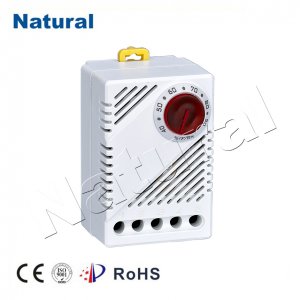In today’s world of advanced technology, temperature and humidity control are vital for various applications. From maintaining the perfect environment for sensitive equipment to ensuring comfort in our homes, the role of thermostats is undeniable. Among these, hygrostat thermostats play a unique and crucial role. In this article, we will delve into the world of hygrostat thermostats, exploring their functions, applications, and importance.

What is a Hygrostat Thermostat? A hygrostat thermostat is a specialized device designed to regulate both temperature and humidity within a given space. Unlike traditional thermostats that focus solely on temperature control, hygrostat thermostats consider the moisture content in the air as well. This dual functionality makes them particularly valuable in situations where precise climate control is essential. How Does a Hygrostat Thermostat Work? The operation of a hygrostat thermostat is based on the principles of temperature and humidity sensing. Inside the device, there are two sensors: one for temperature and one for humidity. These sensors continuously monitor the environmental conditions. When the temperature or humidity level deviates from the preset values, the hygrostat thermostat takes action. For instance, if the temperature rises above the desired setting, the thermostat activates the cooling system to bring the temperature back to the desired level. Simultaneously, if the humidity level exceeds the set threshold, it activates a dehumidification system to reduce moisture content in the air. Applications of Hygrostat Thermostats Home Comfort: Hygrostat thermostats are commonly used in residential heating, ventilation, and air conditioning (HVAC) systems to maintain a comfortable indoor environment. They help prevent problems such as mold growth and condensation. Greenhouses: In agriculture and horticulture, greenhouses rely on hygrostat thermostats to create optimal conditions for plant growth. These thermostats ensure that both temperature and humidity are conducive to plant health. Data Centers: Temperature and humidity control are critical in data centers to prevent overheating and damage to sensitive equipment. Hygrostat thermostats play a key role in maintaining a stable climate in these facilities. Industrial Processes: Various manufacturing processes require precise control of both temperature and humidity. Hygrostat thermostats are used in industries such as pharmaceuticals, electronics, and food processing to ensure product quality and consistency. Museums and Art Galleries: Preserving valuable artifacts and artworks requires strict environmental control. Hygrostat thermostats help maintain the ideal climate to prevent deterioration. Importance of Hygrostat Thermostats The significance of hygrostat thermostats lies in their ability to provide a controlled environment that meets specific requirements. Here are some key reasons why they are important: Energy Efficiency: By regulating temperature and humidity simultaneously, hygrostat thermostats can optimize energy use. They prevent unnecessary heating or cooling when only one parameter is out of range. Asset Protection: In environments like museums, data centers, and industrial facilities, the use of hygrostat thermostats safeguards valuable assets and equipment from damage due to extreme conditions. Health and Comfort: In residential and commercial spaces, hygrostat thermostats contribute to the health and well-being of occupants by ensuring a comfortable and healthy indoor environment. Process Control: Industries rely on precise control of environmental conditions for consistent product quality and efficient manufacturing processes. Environmental Impact: Through efficient energy use, hygrostat thermostats can help reduce the environmental impact of heating and cooling systems. In conclusion, hygrostat thermostats are indispensable tools for controlling temperature and humidity in various applications. Their ability to maintain a balanced and controlled environment contributes to energy efficiency, asset protection, and the well-being of individuals and the environment alike. As technology continues to advance, hygrostat thermostats will remain a crucial component in achieving optimal climate control.